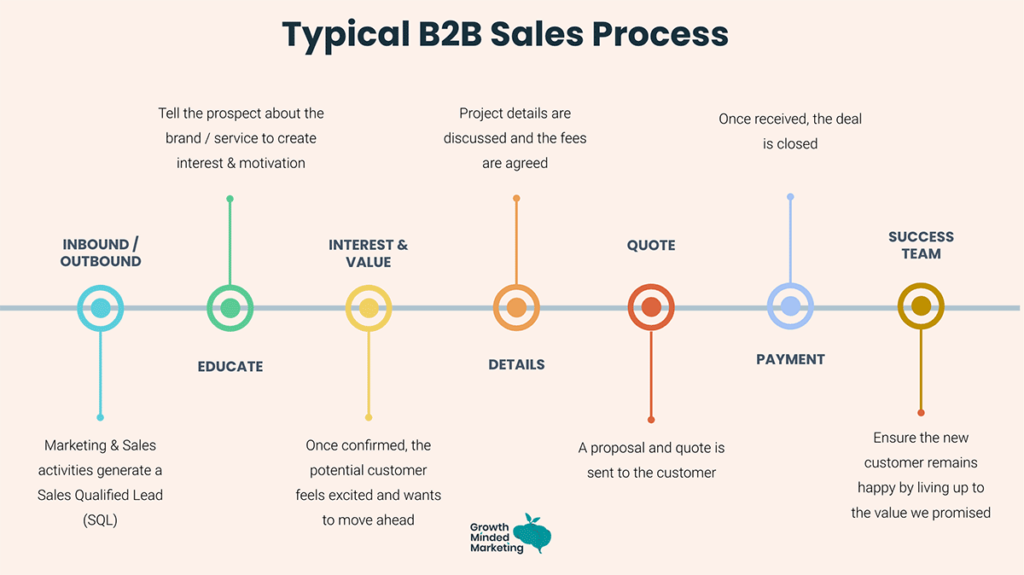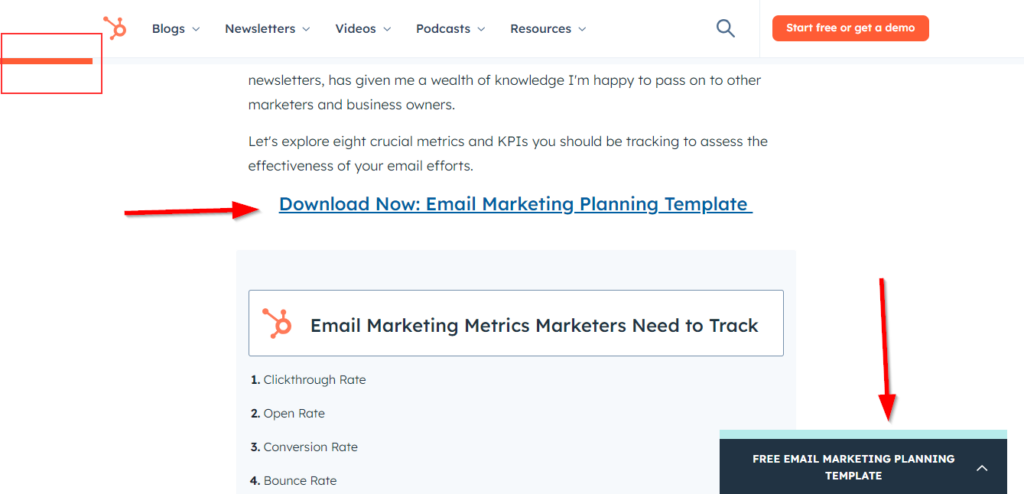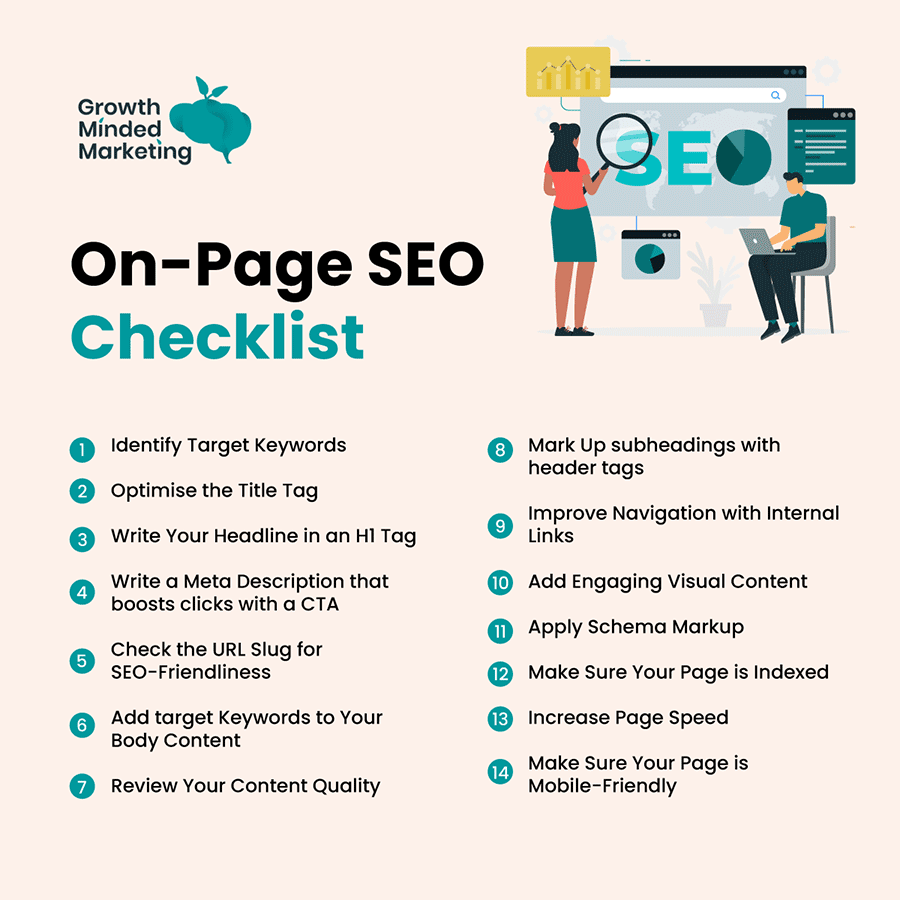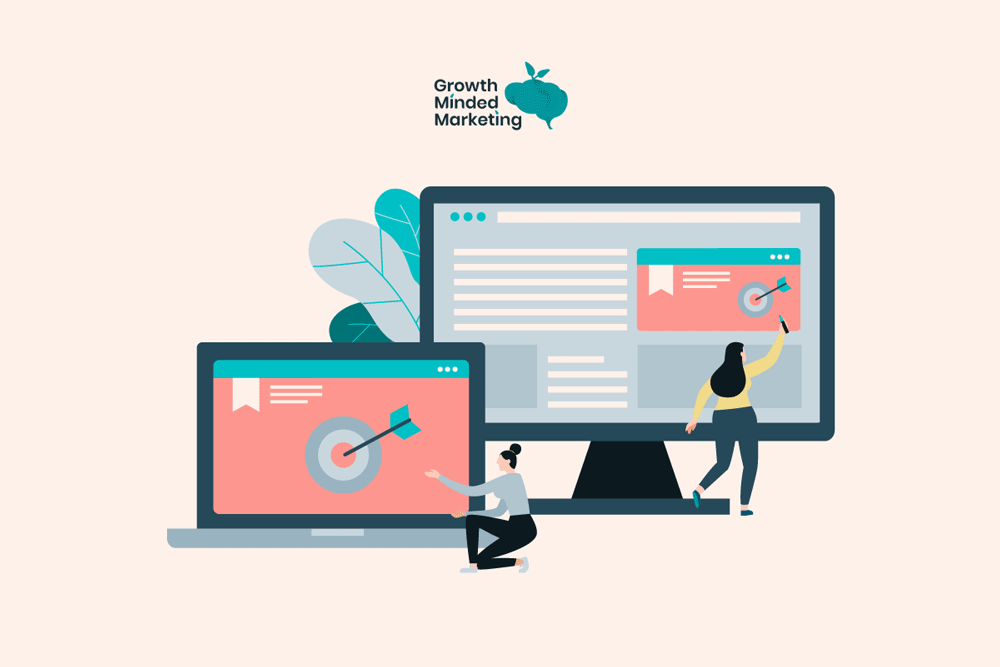If you work in a B2B (business-to-business) industry, you’ve got a lot of online marketing channels to choose from. Organic traffic is one of the few channels that provide your B2B company with sustainable growth, evergreen content, and highly cost-effective leads and sales.
Over 80% of B2B businesses agree that SEO generates higher quality leads than online advertisement and more than 70% of B2B companies say that they generate more sales from SEO than PPC.
B2B marketing is incomplete without SEO.
How and where to get started with B2B SEO? Let’s find out…
Table of Contents
ToggleWhat is B2B SEO?
Business-to-business (B2B) SEO refers to improving the organic search visibility of B2B websites which are essentially businesses that sell products and services to other businesses (such as a project management app that targets other businesses.
The primary focus of B2B search engine optimisation is to improve search engine ranking, increase organic traffic, and generate more leads from search engines. B2B businesses have a lengthy sales cycle that requires lead nurturing and getting in touch with a potential customer through multiple touchpoints before a sale is generated. This makes SEO for B2B more focused on lead generation than direct sales.
B2B SEO strategy follows the same rules, practices, and techniques for SEO as the underlying optimisation method doesn’t change. The way you develop and execute a B2B SEO strategy is different from a B2C SEO strategy, but the rules of the game don’t change.
B2B vs. B2C SEO: What’s the difference?
Here’s a sneak peek into what makes B2B SEO different from B2C SEO and why you should consider having a customised B2B SEO strategy for your B2B brand:
1. Keyword search volume
B2B companies target keywords that are extremely specific to their business and buyer persona which means the search volume is usually quite low. B2C companies tend to have high search volume keywords.
Here’s an example of a typical B2B keyword:
The keyword has roughly 20 searches per month and it is highly specific and targeted. It targets businesses that are looking for a project management app for their teams.
Here’s an example of a typical B2C keyword:
The keyword has well over 5.8K monthly searches and it’s not even specific. Improving targeting and narrowing down the keyword will lower its search volume but it will still be higher than most B2B keywords.
This means B2B companies have to identify relevant and specific keywords to pre-filter ideal customers as it reduces cost. Targeting irrelevant audiences gets too costly for B2B businesses due to lengthy sales funnel and lead nurturing (more on this below).
Targeting the wrong keyword(s) means you spend resources on leads that are least likely to convert and you get to know this after spending tons of resources on the lead nurturing process.
This is one major reason why B2B keywords have low search volume as they are highly targeted and specific. The room for error is quite low, unlike B2C keywords where sales take place right away on the website without any sort of nurturing or interaction.
2. Competition
The organic competition for B2B keywords is lower than for B2C keywords. This is mainly because B2B sectors are more niche than B2C and this creates severe competition in most of the niches.
Consequently, B2B keywords have higher CPC than B2C keywords due to high competition and companies willing to pay more to acquire a lead.
This makes B2B SEO quite cost-effective (especially when compared with B2B PPC). You can rank with less effort for your target keywords and even if you generate a single organic lead, it could potentially pay for your entire SEO cost as some leads can be worth thousands of pounds.
That’s a kind of benefit you don’t get with B2C SEO.
3. Sales funnel
The B2B sales funnel is long and complicated which means B2B SEO is geared towards lead generation while the sales team is responsible for nurturing and closing deals.
This isn’t the case with B2C where the sales funnel is quite short and straightforward. There is no concept of lead generation, rather direct sales are generated from the organic traffic. For example, an e-commerce store converts visitors into customers with no lead generation and sales pipeline.
Here’s what a typical B2B sales process looks like:
The average B2B sales cycle length is 2.1 months and most B2B companies take more than a month to close a deal:
With such a long sales process, the B2B SEO strategy tends to be quite different.
You’ll likely need to:
- Create on informational content that focuses on lead generation
- Create content for all the stages of the sales funnel and process because it takes up to 40+ touches to close a complex B2B sales deal
- Have relevant content ranking in SERPs to ensure your potential clients find your content to boost the number of touches and to keep bringing them back
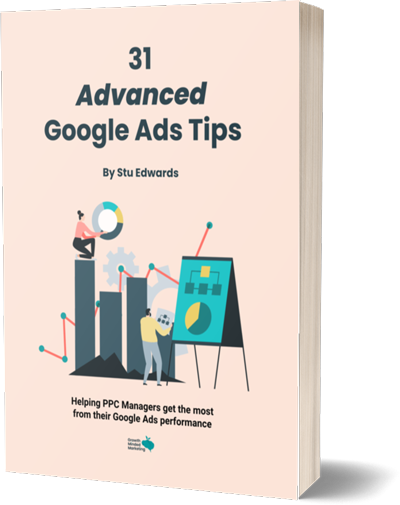
Google Ads tips
Learn advanced tips that PPC professionals use to dramatically increase their Google Ads performance!
4. Conversion rate
Long, complex sales process leads to lower conversion rates for B2B whereas B2C businesses have much higher conversion rates.
The B2B SEO strategy has to be planned accordingly with an understanding that it’ll have a low conversion rate. you have to attract the right traffic by targeting the right keywords to ensure you are making the most of your SEO efforts – to avoid spending resources on low-quality organic leads.
Similarly, conversion and sale attribution and proving ROI for a B2B SEO campaign get quite complicated. The conversions might be low, but it doesn’t necessarily mean a poor SEO ROI because a single conversion might pay for the entire campaign.
5. Thought leadership
B2B SEO content must showcase expertise, thought leadership, and authority as B2B customers are looking for content (and brands) that provide them with solutions to their problems. This isn’t always the case with B2C SEO content where you can publish content without relying too much on thought leadership.
This means your B2B SEO strategy should focus on creating a wide range of content that demonstrates expertise. It calls for a well-thought-out keyword strategy, editorial calendar, content optimization, and publication of content in various formats.
For example, a lot of B2B companies often speak at conferences and have podcast appearances. This is a way to prove their expertise in the niche that helps with SEO.
Further Reading
7 best practices to create a sound B2B SEO Strategy
Developing an SEO strategy for a B2B business requires attention to detail. A slight mistake might cause irreparable damage. The following best practices will help you stay on track and create a successful B2B SEO strategy for your business:
1. Develop buyer personas
Having a clear understanding of your target audience and who your ideal customers are is the most important step in the B2B SEO strategy development. And understanding your audience gets easier and more meaningful when you’ve developed buyer personas.
A buyer persona is a fictional representation of who your ideal customers are. It is a document that lists important information about your audience such as life challenges, pain points, type of content they read, business goals, etc.
Creating multiple buyer personas helps you create content that’s more likely to deliver results. For example, when you know the fears and challenges that warehouse managers face, you’ll be able to create content that resonates with them and it helps you pitch your product in a way that addresses their challenges and fears effectively.
Having an understanding of buyer persona is one thing and creating buyer personas is another thing. The effectiveness of a buyer persona depends on one thing: Data accuracy.
You can fill a buyer persona based on your judgement or data from secondary sources, but such a persona is least likely to do a decent job.
Primary data collection and regularly updating and tweaking personas as you get more insights from analytics (and other data sources) is the right way to create marketing personas that truly represent your target audience.
And that’s exactly what you have to do as the first step to develop an effective B2B SEO strategy. Collect data from your target audience using surveys, interviews, focus groups, and other methods, and use it to create personas.
Avoid using intuition or guesswork.
Once you’ve got a buyer persona, keep updating it. As you continue to drive organic traffic, you will learn more about your persona, this needs to be incorporated into the persona.
Buyer personas that aren’t updated will eventually fail to perform.
2. Keyword research
Keyword research should be driven by your buyer personas. You can’t just target any low-competition keywords for B2B SEO because it will exhaust a lot of resources without any output.
Your keyword research should focus on the following:
- Buyer persona. What keywords your audience uses to search content and products
- Search intent. What’s the intent behind a searcher for running a search query? Again, refer to the relevant buyer persona and make sure your content aligns with the searcher’s intent
- Identify keywords for all funnel stages. Unlike B2C, where publishing top of funnel content is a more common practice, you have to create content for all funnel stages in the case of B2B SEO by identifying relevant keywords covering the entire funnel
Here’s a breakdown of what type of content (in general) you should create for different funnel stages:
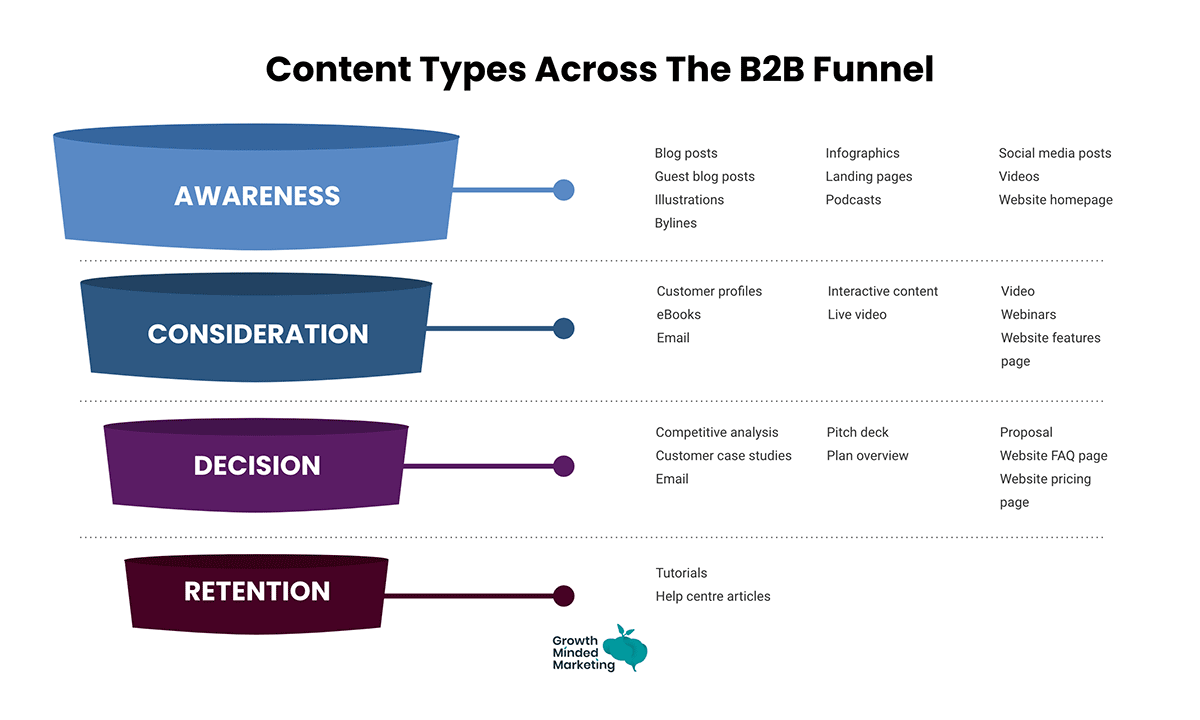
You need to do two things:
- Find keywords to target using a paid or free keyword research tool. Check out our ‘What are SEO keywords’ guide for free and paid keyword research tools.
- Identify the search intent behind each keyword. Use existing ranking content and buyer personas to get a better idea of search intent.
Cosmetic keyword research for B2B SEO might prove to be lethal. It has to be well-thought, systematic, data-driven, and conceptually accurate.
3. Sales funnel optimisation
How well you understand the B2B sales funnel and how it’s optimised makes a huge impact on the success of the B2B SEO strategy. B2B customers don’t buy overnight after reading a compelling article on your blog. They spend heaps of time (usually months) before officially entering the sales process.
This means the way you design and optimise the sales funnel makes or breaks the deal.
The keywords (and content) must be mapped to relevant funnel stages to improve targeting. For example, comparison-related keywords like “your product vs competitor product” or “X alternatives of ABC” are relevant to the decision stage. That’s the stage when a potential B2B client already knows your product and is at the decision-making stage. You need to give a final push.
If you aren’t targeting comparison keywords, you’ll lose a good chunk of customers who end up visiting another organic page.
When you haven’t optimised your B2B funnel, it keeps leaking making it hard to generate sales. Here are a few practical ways to optimise the B2B funnel and reduce leakages:
- Understand the sales funnel, buyer journey, and sales cycle
- Create content for all funnel stages – not just one or two
- Make it easy for potential buyers to move from one stage to the next. Relevant, helpful content can help a lot
- Reduce friction. Keep lead generation form as short as possible
- Bring the right traffic to your site by targeting the right keywords. Irrelevant traffic is the biggest reason for funnel leakage.
4. Create helpful, authoritative content
Mediocre content doesn’t work today. In the case of B2B SEO content, you have to publish above-average content that’s more than helpful to the reader
Businesses look at authority, branding, and expertise when reading content and making decisions based on content. Anything that’s average just won’t cut it.
You need to strategically add CTAs in your content to generate leads by adding lead generation forms to collect email addresses of the readers.
Here’s an example from HubSpot. They use a highly relevant lead magnet in almost all their articles to generate leads. The CTA is placed above the fold and is always relevant to the article (content-funnel mapping):
Using a lead magnet (a free resource for lead generation) is one of the best ways to generate B2B leads.
Then look to embed CTAs in content strategically.
5. Optimise content
Content has to be optimised. Just because you are writing exceptionally good content for businesses, it doesn’t mean you can bypass optimisation (that’s what most businesses think and end up ignoring the basics of SEO).
You have to make content search engine friendly so spiders can crawl, index, and rank your content for the right keywords.
This means you have to follow all the following rules:
Use HTML tags such as title, meta description, alt tags, heading tags, etc.,
-
- Structure your content properly
- Add internal links to avoid creating content silos
- Add images, videos, and other forms of media
- Cover all the aspects of the topic
- Link cluster and pillar pages for authority
- Have detailed author bios and author pages that show their expertise and experience
- Improve page load speed by removing best practices as reported by PageSpeed Insights
6. Promote your content!
Promoting content once it has been published plays a huge role in improving search ranking. Sharing newly published blog posts on your social media accounts doesn’t impact B2B SEO.
You have to use techniques that improve search visibility of your content and that’s best achieved by acquiring relevant backlinks.
The more backlinks you have, the higher will be your rankings. It is confirmed by several studies such as here and here.
Acquiring backlinks is a tricky process. Here are a few best practices to get relevant backlinks for your B2B content:
- Guest post on relevant sites
- Ask business partners to cite your content
- Create an awesome piece of content, reach out to relevant sites, and show them your masterpiece
- Use your network and connections for backlinks
7. Track performance
Search engine optimisation is all about experimentation. You have to strictly monitor B2B SEO performance and figure out what works and what doesn’t.
The rule is simple: Do more of what works.
Track performance at a granular level.
What CTAs work, what type of content ranks better and why, why a piece of content isn’t ranking well, what type of backlinks move the needle, what type of content updates backfire, etc.
It’ll help you when all the data is used for decision-making and experimentation. Businesses have this data but they don’t use it for experimentation by finding answers. Dig deep and find the “why” to improve B2B SEO.
It works more than anything else.

Google Ads tips
Learn advanced tips that PPC professionals use to dramatically increase their Google Ads performance!
Conclusion
A strong B2B SEO strategy is crucial for your business’s organic growth. Executed well, it provides sustainable, long-term targeted traffic and leads from search engines.
Whether it’s a local SEO B2B strategy or a full-fledged sitewide strategy, it has to be well-thought and strategically developed and executed because it is linked to your marketing and sales strategies.
For example, sales funnel, lead generation system, email marketing, CRM integrations etc are all linked to the performance of your B2B SEO strategy. It’s part of a bigger marketing strategy and won’t function properly if any of the linked marketing or sales channels lack in some way.
Sales pitch time: This is why getting help from B2B SEO experts like us is a good idea.
When businesses partner with us, we’ll define a sustainable B2B SEO strategy and take care of all the associated channels and variables so that the entire system works efficiently.
Please feel free to contact us to discuss your project and let’s move in the right direction!

Find out how our SEO management services can help your business grow in 2024




